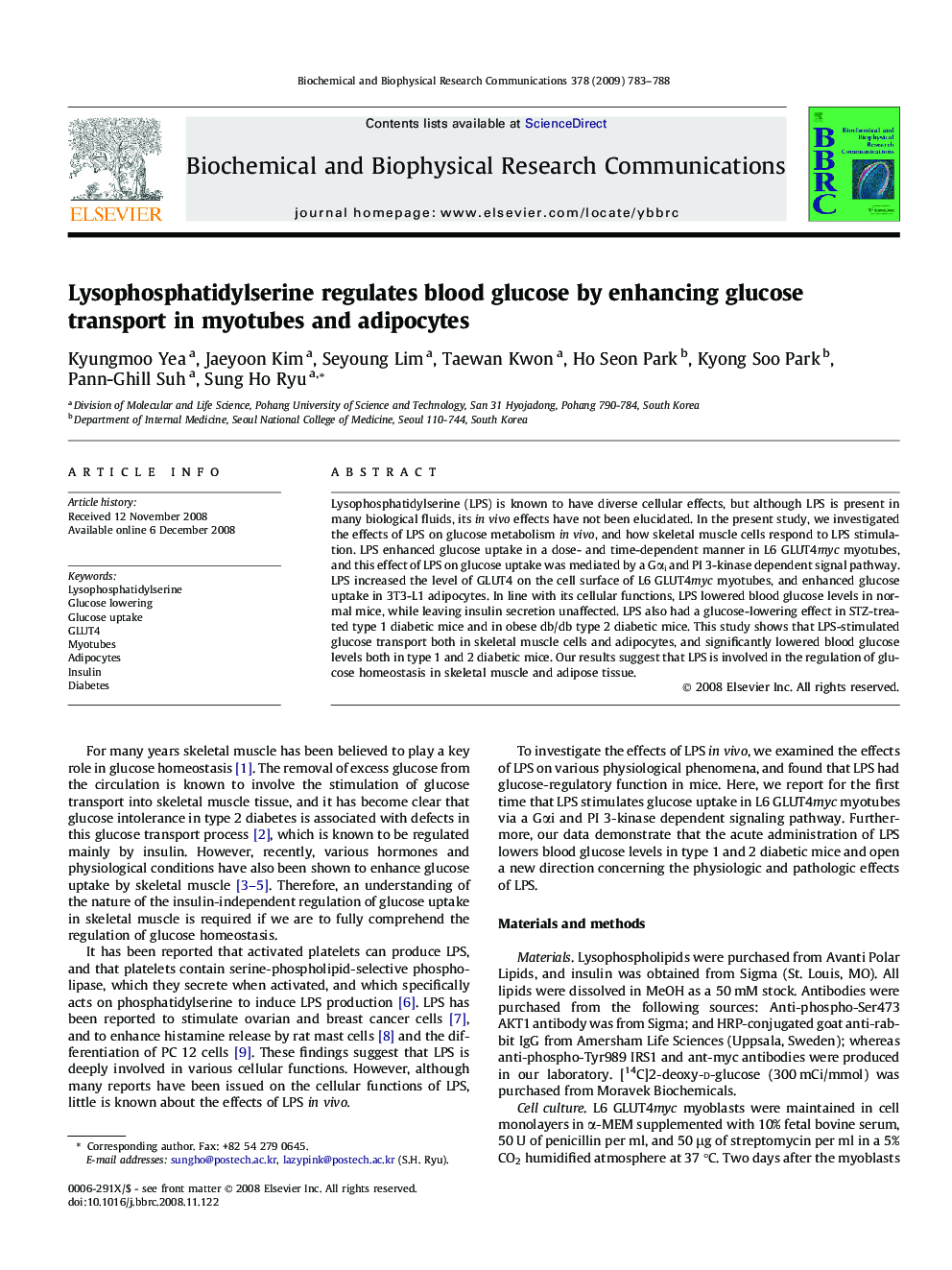| Article ID | Journal | Published Year | Pages | File Type |
|---|---|---|---|---|
| 1934981 | Biochemical and Biophysical Research Communications | 2009 | 6 Pages |
Lysophosphatidylserine (LPS) is known to have diverse cellular effects, but although LPS is present in many biological fluids, its in vivo effects have not been elucidated. In the present study, we investigated the effects of LPS on glucose metabolism in vivo, and how skeletal muscle cells respond to LPS stimulation. LPS enhanced glucose uptake in a dose- and time-dependent manner in L6 GLUT4myc myotubes, and this effect of LPS on glucose uptake was mediated by a Gαi and PI 3-kinase dependent signal pathway. LPS increased the level of GLUT4 on the cell surface of L6 GLUT4myc myotubes, and enhanced glucose uptake in 3T3-L1 adipocytes. In line with its cellular functions, LPS lowered blood glucose levels in normal mice, while leaving insulin secretion unaffected. LPS also had a glucose-lowering effect in STZ-treated type 1 diabetic mice and in obese db/db type 2 diabetic mice. This study shows that LPS-stimulated glucose transport both in skeletal muscle cells and adipocytes, and significantly lowered blood glucose levels both in type 1 and 2 diabetic mice. Our results suggest that LPS is involved in the regulation of glucose homeostasis in skeletal muscle and adipose tissue.
